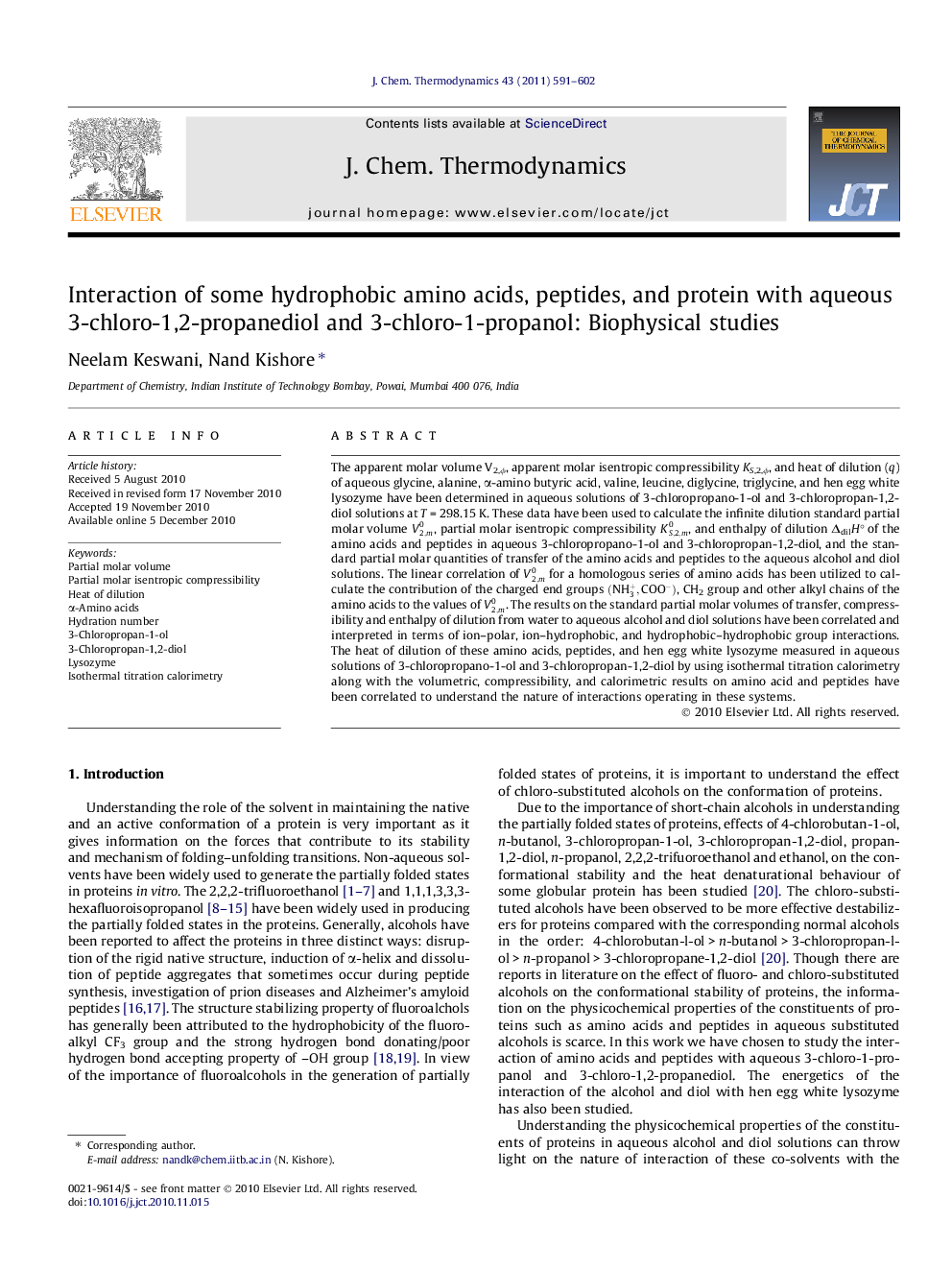| Article ID | Journal | Published Year | Pages | File Type |
|---|---|---|---|---|
| 216753 | The Journal of Chemical Thermodynamics | 2011 | 12 Pages |
The apparent molar volume V2,ϕ, apparent molar isentropic compressibility KS,2,ϕ, and heat of dilution (q) of aqueous glycine, alanine, α-amino butyric acid, valine, leucine, diglycine, triglycine, and hen egg white lysozyme have been determined in aqueous solutions of 3-chloropropano-1-ol and 3-chloropropan-1,2-diol solutions at T = 298.15 K. These data have been used to calculate the infinite dilution standard partial molar volume V2,m0, partial molar isentropic compressibility KS,2,m0, and enthalpy of dilution ΔdilH ° of the amino acids and peptides in aqueous 3-chloropropano-1-ol and 3-chloropropan-1,2-diol, and the standard partial molar quantities of transfer of the amino acids and peptides to the aqueous alcohol and diol solutions. The linear correlation of V2,m0 for a homologous series of amino acids has been utilized to calculate the contribution of the charged end groups (NH3+,COO-), CH2 group and other alkyl chains of the amino acids to the values of V2,m0. The results on the standard partial molar volumes of transfer, compressibility and enthalpy of dilution from water to aqueous alcohol and diol solutions have been correlated and interpreted in terms of ion–polar, ion–hydrophobic, and hydrophobic–hydrophobic group interactions. The heat of dilution of these amino acids, peptides, and hen egg white lysozyme measured in aqueous solutions of 3-chloropropano-1-ol and 3-chloropropan-1,2-diol by using isothermal titration calorimetry along with the volumetric, compressibility, and calorimetric results on amino acid and peptides have been correlated to understand the nature of interactions operating in these systems.
Research highlights► Thermodynamic properties of amino acids, peptides and protein determined in solution. ► The solvents chosen were 3-chloropropan-1-ol and 3-chloropropan-1,2-diol. ►The results enabled understanding the interactions quantitatively in these systems affecting the protein stability. ► Fine details of interactions provided in-depth analysis.
